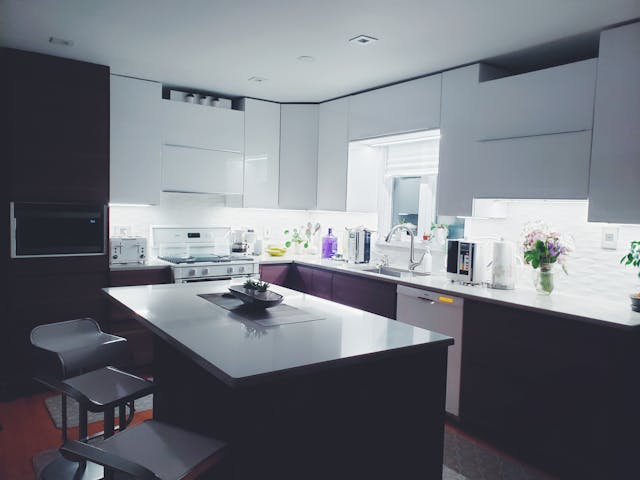
Image Source
Navigating the property investment landscape has never been more exciting or complex. Modern strategies and technologies are transforming how investors approach the real estate market, offering new opportunities and challenges. Whether it’s leveraging data analytics to spot emerging trends, incorporating smart technologies to boost property values, or exploring innovative investment methods like crowdfunding, staying informed is key.
In today’s dynamic market, understanding local trends, adapting to legal changes, and diversifying investments are crucial for success. With property managers playing a more significant role than ever, finding the right partner can make all the difference in managing and growing your investments.
This article delves into how these contemporary strategies are reshaping property investments, providing practical insights into each approach.
The Role of Property Managers in Today’s Market
Finding a reliable property manager is essential in today’s property investment landscape. Property managers now play a crucial role, leveraging advanced technology to streamline their services and enhance their effectiveness. Their responsibilities extend beyond basic property maintenance; they manage rent payments, maintenance requests, and tenant communications efficiently. This ensures that properties are well-maintained, ultimately protecting the investment.
You can find a property manager by researching local firms, seeking recommendations from other property owners, or checking online reviews. For instance, Nomadic Real Estate, a well-regarded firm, is known for its effective property management services. Evaluating their reputation and service quality will help ensure they can provide the comprehensive management needed for your property.
Modern property managers also use data analytics to offer insights into market trends and tenant preferences. This helps investors make informed decisions about property improvements and pricing strategies. By partnering with a property manager who stays informed and uses these insights effectively, such as those at Nomadic Real Estate, property owners can maximize their investment potential, reduce vacancy rates, and ensure that their properties are managed professionally.
Leveraging Data Analytics for Smarter Investments
Data analytics has revolutionized property investment by providing detailed insights into market conditions and property performance. Investors can now access sophisticated tools that analyze trends such as property value fluctuations, rental demand, and neighborhood growth. These tools help identify high-growth areas and potential investment opportunities that might not be immediately obvious.
Platforms offering data analytics for real estate use various metrics, including historical data, demographic trends, and economic indicators, to predict future property values and rental yields. By utilizing these resources, investors can make more strategic decisions, avoiding potential pitfalls and capitalizing on emerging trends.
For example, predictive analytics can highlight areas experiencing significant economic development or infrastructure improvements, signaling potential increases in property values. Data-driven investment decisions help mitigate risks and enhance the chances of achieving favorable returns on investment.
The Impact of Smart Technology on Property Value
Smart technology is increasingly influencing property values and attractiveness to tenants. Features such as smart thermostats, security systems, and automated lighting are becoming standard expectations rather than luxury add-ons. These technologies not only offer convenience and energy efficiency but also contribute to higher property values.
Smart home technologies can attract tech-savvy tenants and provide added value through enhanced security and energy management. For instance, properties equipped with smart security systems can offer tenants increased peace of mind, while smart thermostats can help reduce energy costs. Both features contribute to a more appealing rental property and can justify higher rental rates.
The integration of smart technology is also seen as a forward-thinking investment, aligning with growing consumer expectations for modern, connected living spaces. As these technologies become more prevalent, properties with smart features are likely to remain competitive and maintain their value over time.
Crowdfunding and Collaborative Investments
Crowdfunding has emerged as a significant trend in property investment, allowing investors to pool resources and participate in real estate ventures that might have been otherwise out of reach. This collaborative approach opens up opportunities for smaller investors to access larger projects and diversify their portfolios.
Property crowdfunding platforms enable investors to contribute to various real estate projects, ranging from residential developments to commercial properties. By participating in crowdfunding, investors can benefit from collective expertise and shared financial risks. However, it’s important to carefully evaluate the platforms and projects before investing, as each opportunity comes with its own set of risks and rewards.
The rise of property crowdfunding reflects a shift toward more inclusive and accessible investment options. It provides an avenue for investors to engage in real estate with lower barriers to entry while also offering the potential for attractive returns.
The Importance of Understanding Local Market Trends
Understanding local market trends is vital for making informed property investment decisions. Local economic factors, such as employment rates, population growth, and infrastructure developments, significantly impact property values and rental demand. Investors need to stay informed about these trends to identify promising investment opportunities and avoid potential pitfalls.
Tools such as market analysis reports, local real estate newsletters, and economic forecasts can provide valuable insights into regional market conditions. These resources help investors track changes in property values, rental rates, and demographic shifts. For instance, an area experiencing significant job growth or new infrastructure projects might indicate rising property values and increased demand for rentals.
Navigating Legal and Regulatory Changes
Keeping up with legal and regulatory changes is crucial for property investors to ensure compliance and avoid costly penalties. Recent changes in property laws, zoning regulations, and rental agreements can have a significant impact on investment strategies and property management practices.
For instance, new rent control laws or changes in eviction procedures can alter the financial viability of rental properties. Investors need to stay informed about these changes and adapt their strategies accordingly. This may involve consulting with legal experts or property management professionals to navigate complex regulations.
Diversification Strategies for Risk Management
Diversification is a key strategy for managing risk in property investments. By investing in a variety of property types and locations, investors can reduce their exposure to market fluctuations and economic downturns. Diversification helps spread risk and increase the likelihood of stable returns.
Investors might consider diversifying across different property types, such as residential, commercial, and industrial properties. Each type has its own set of risks and rewards, and diversifying across them can balance out potential losses in one sector with gains in another. Additionally, investing in properties located in various geographic areas can help mitigate risks associated with local market downturns.
Effective diversification also involves assessing different investment strategies, such as direct property ownership versus real estate investment trusts (REITs). By exploring multiple avenues for property investment, investors can create a more resilient portfolio.
Modern property investment strategies are reshaping the real estate landscape in significant ways. From the essential role of property managers and the benefits of data analytics to the impact of smart technology and sustainable practices, investors must navigate a dynamic environment to maximize their returns. Crowdfunding and collaborative investments offer new opportunities, and understanding local market trends and legal changes is crucial for success.




